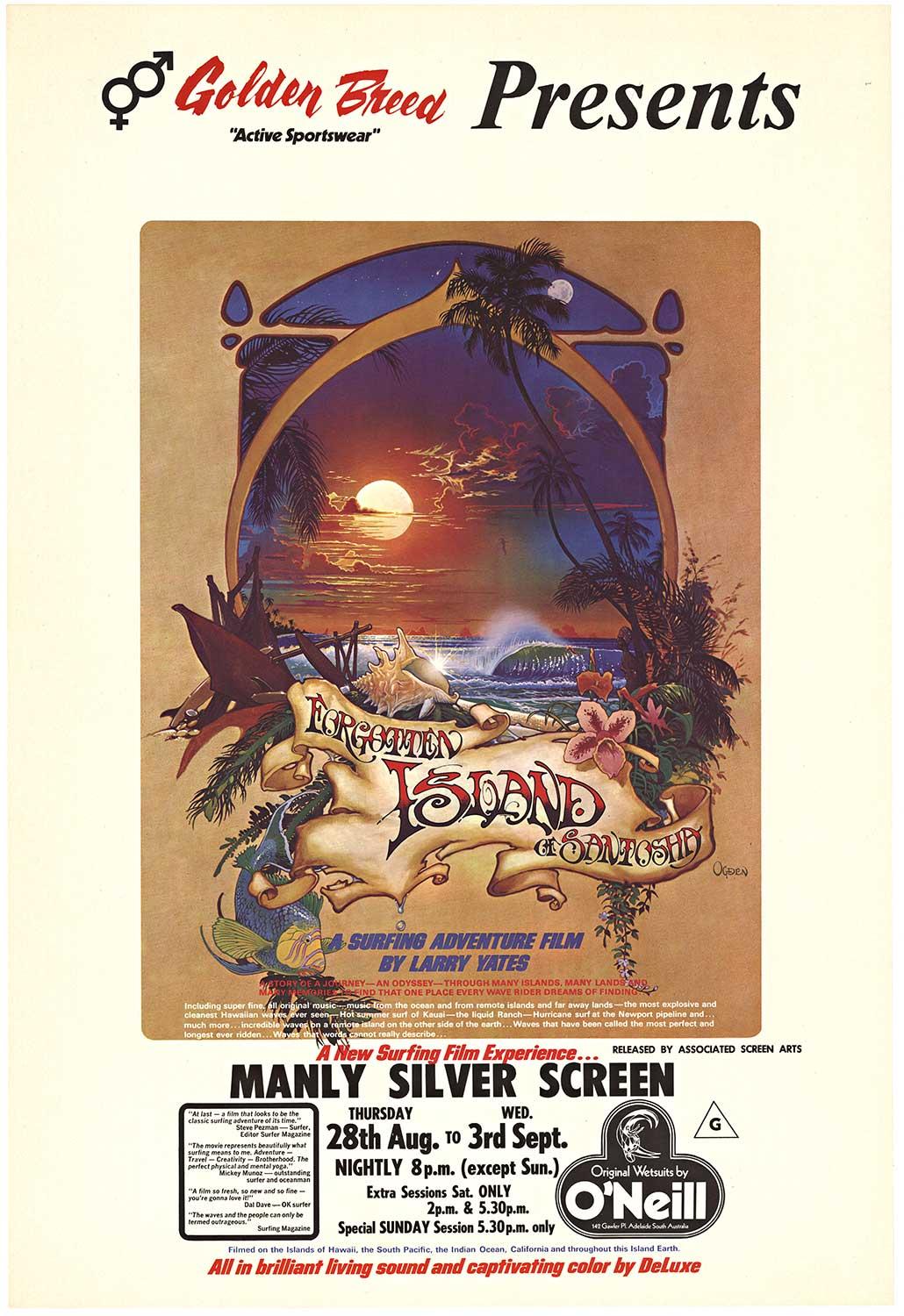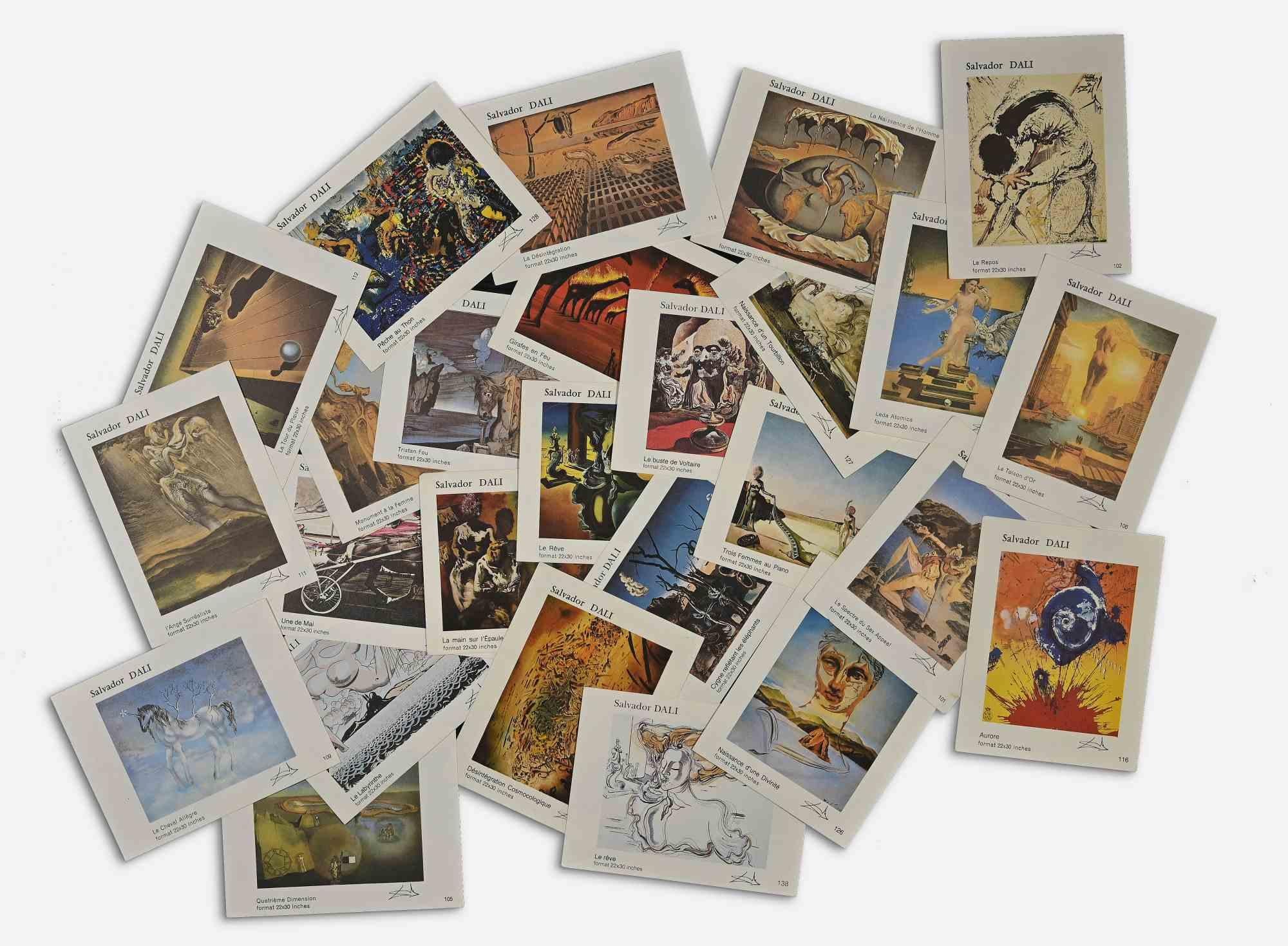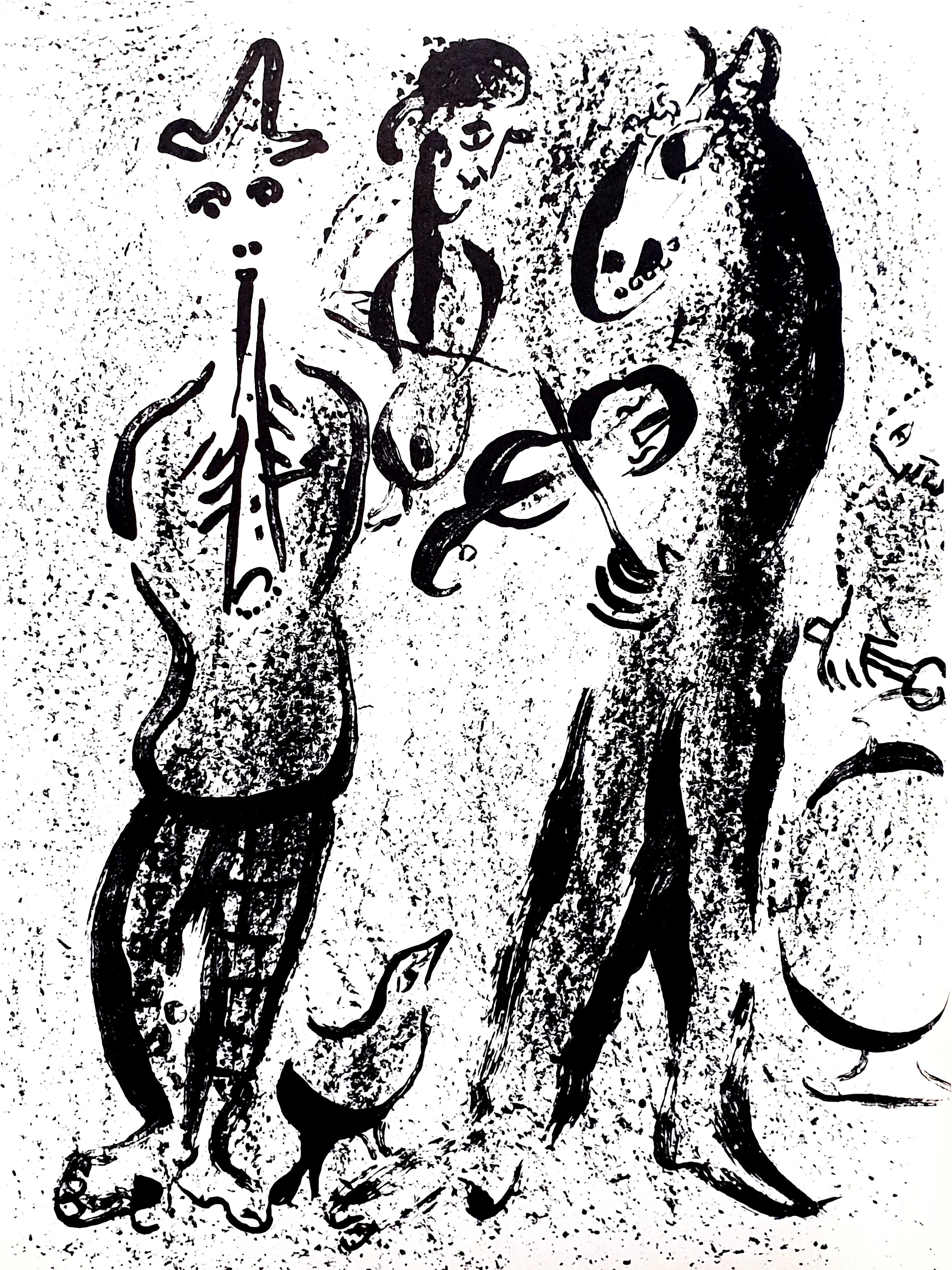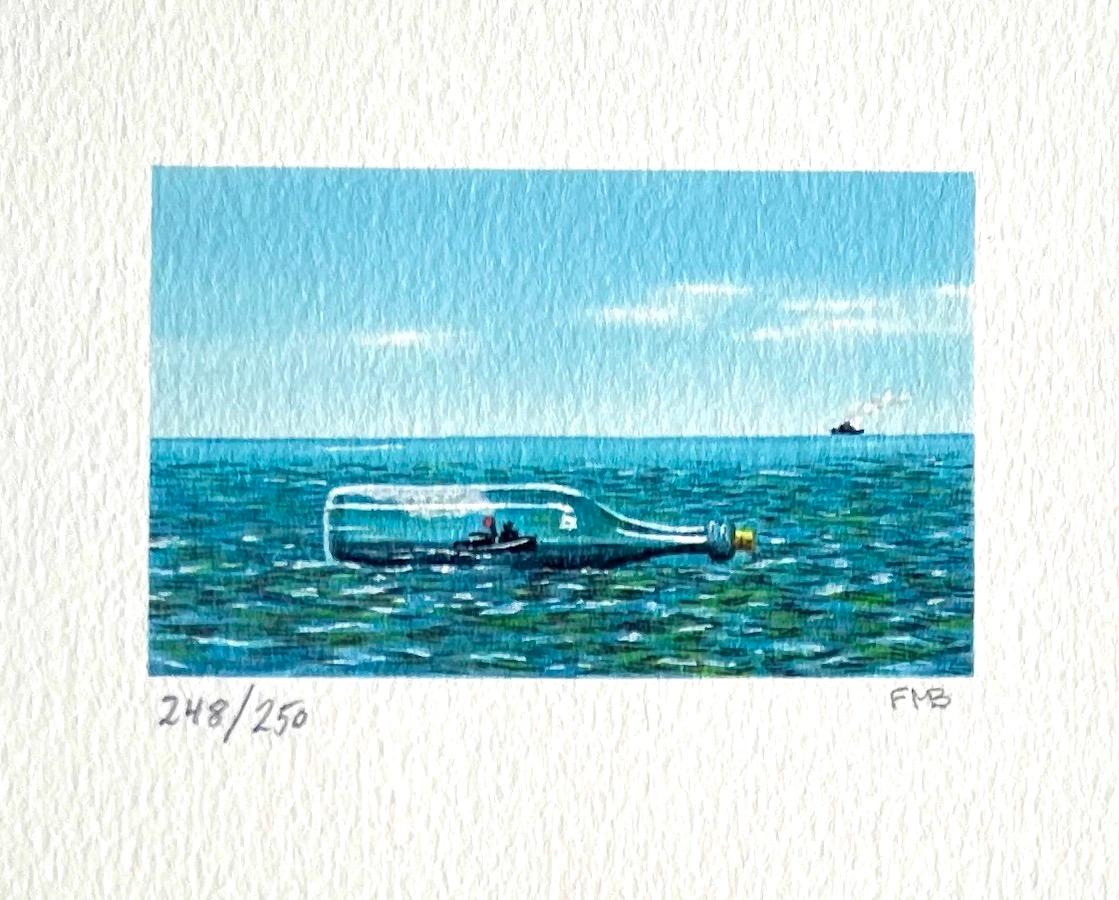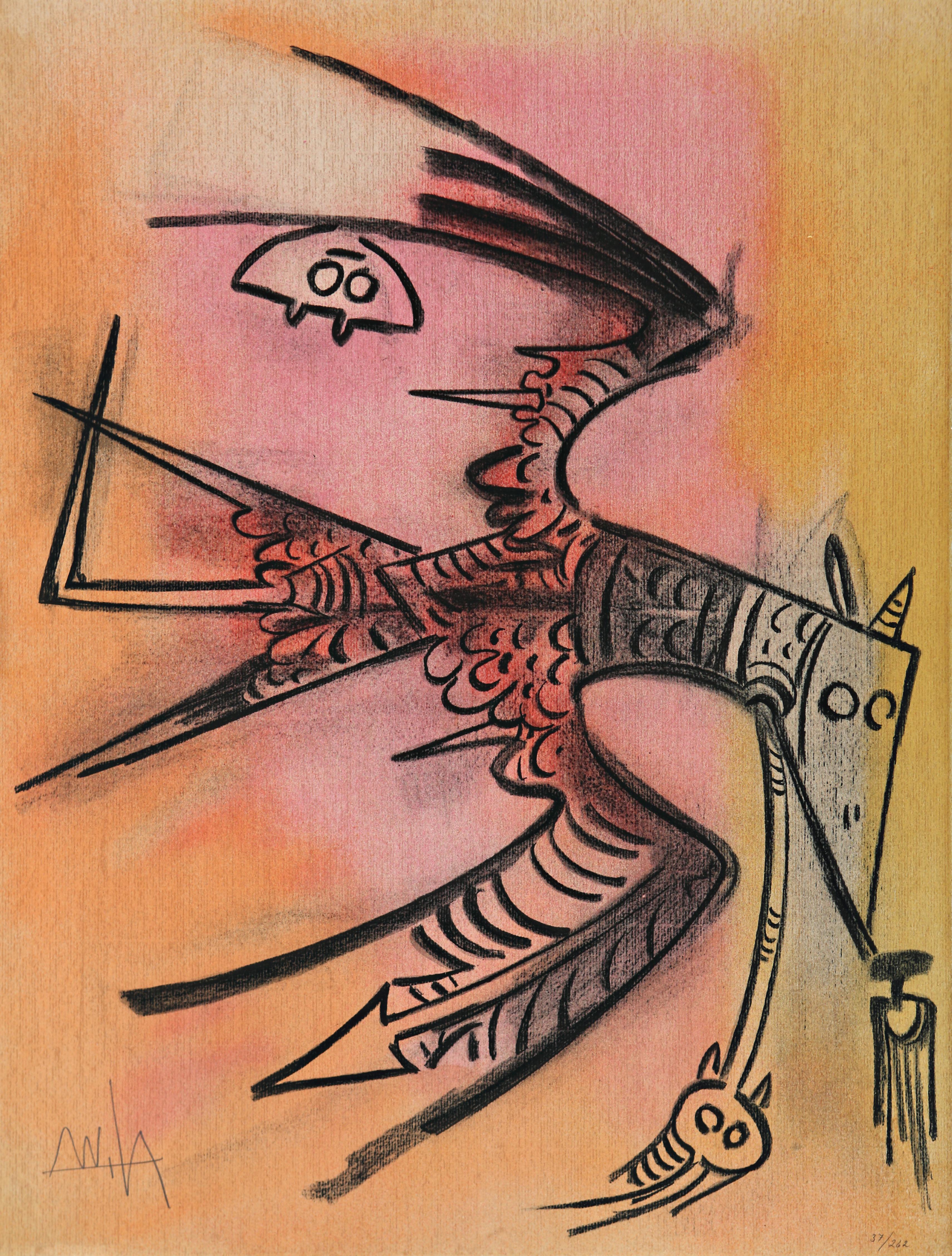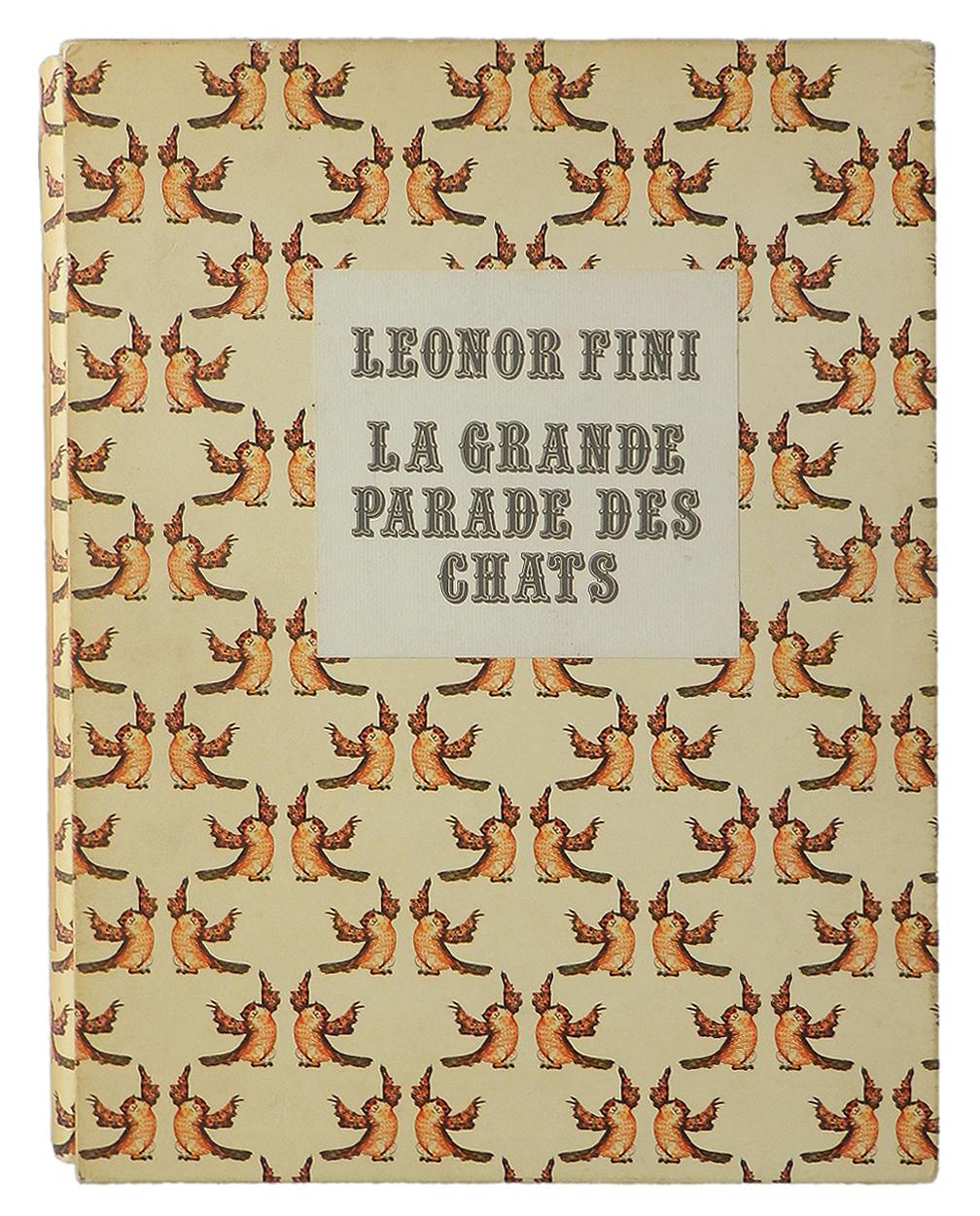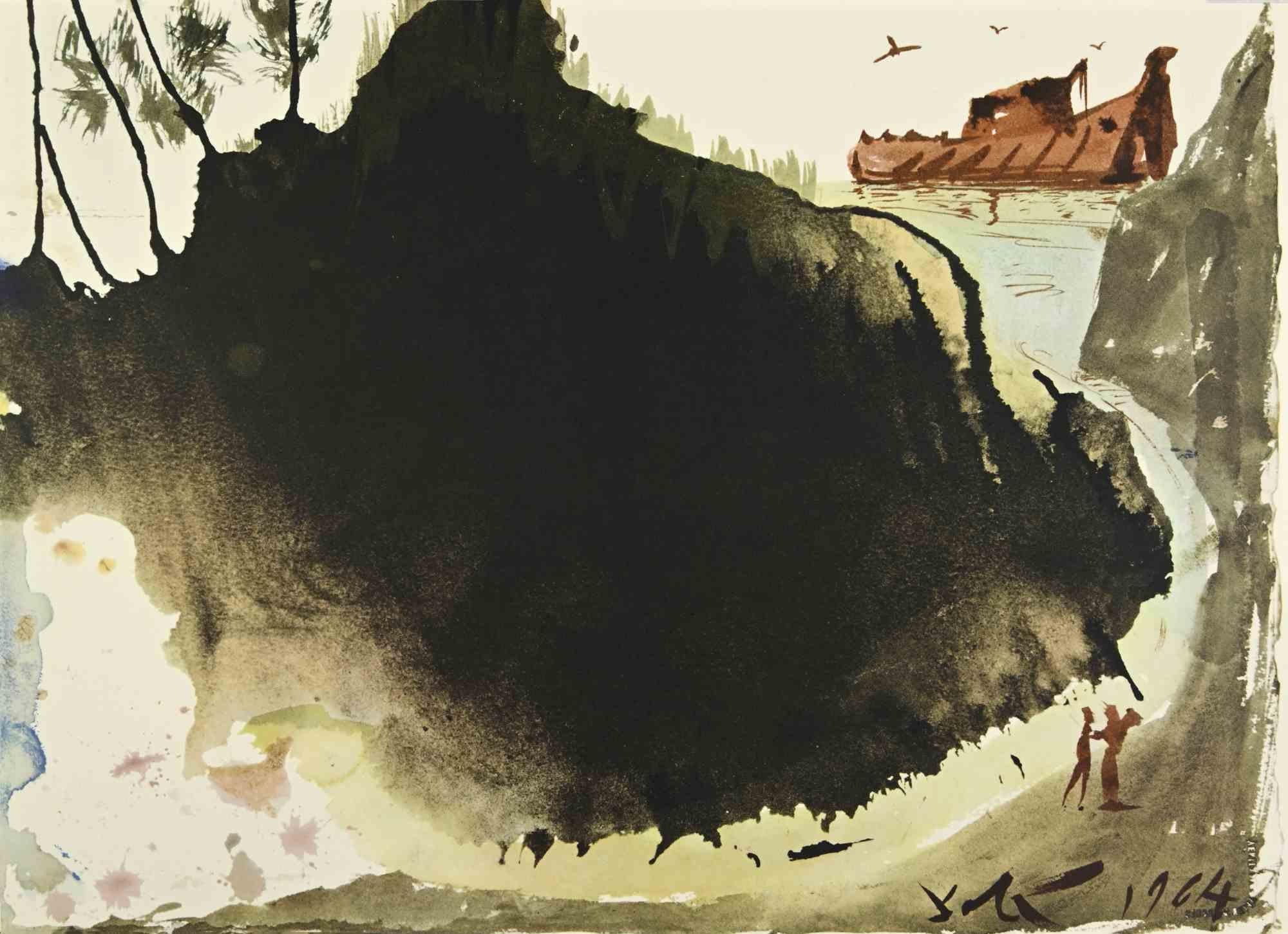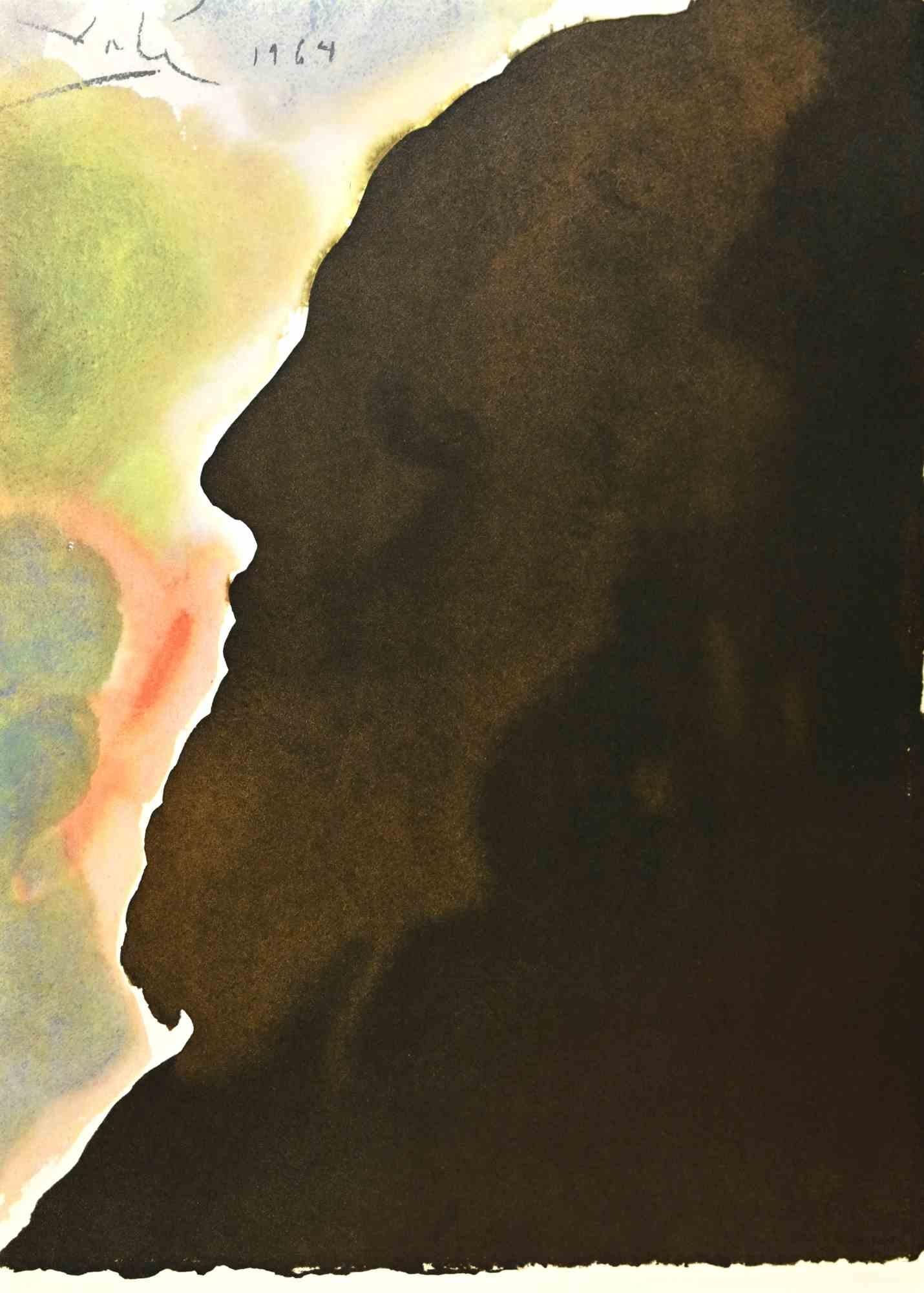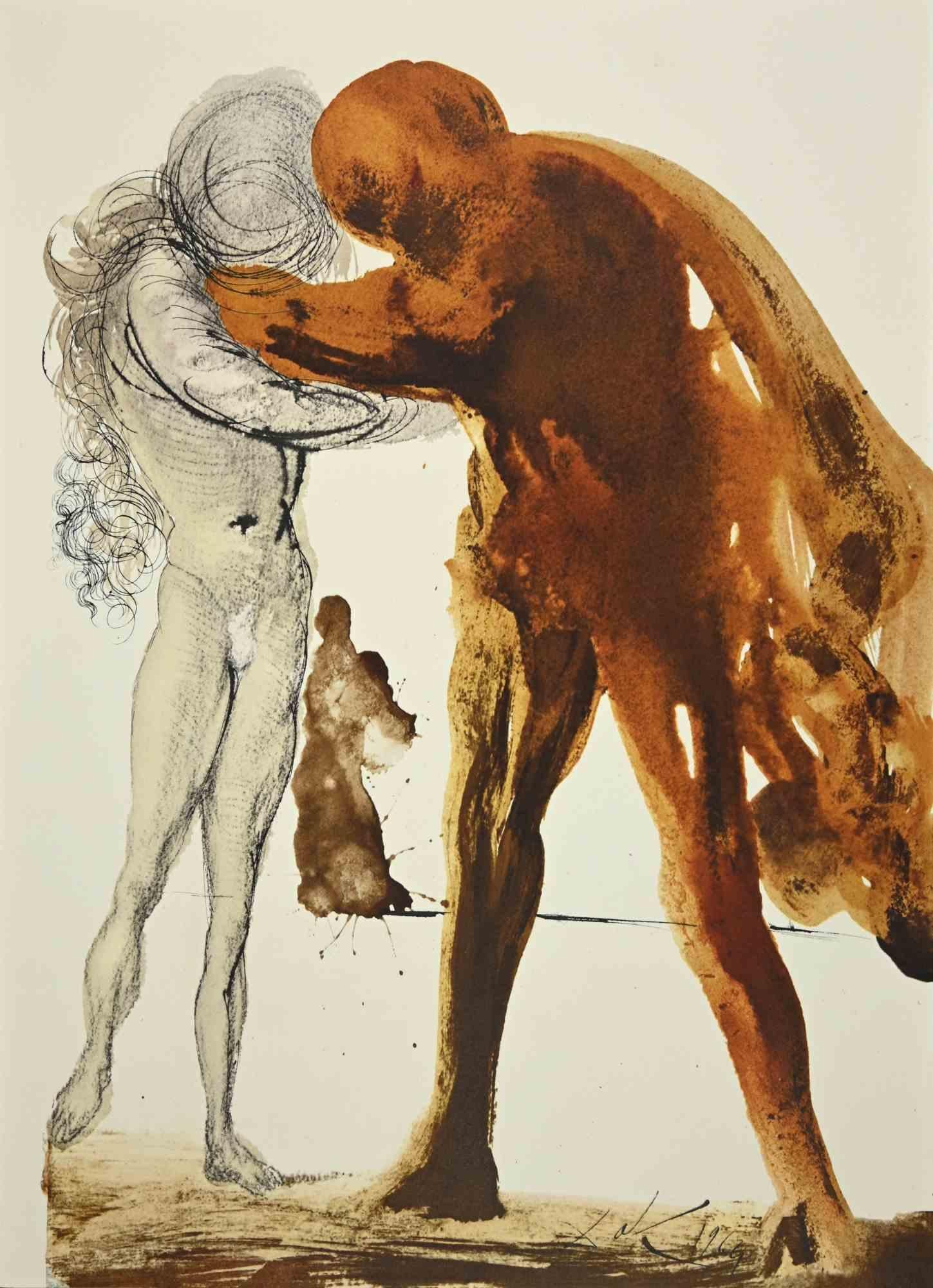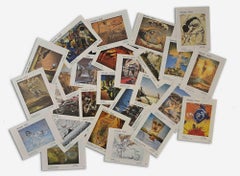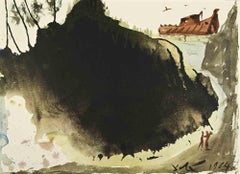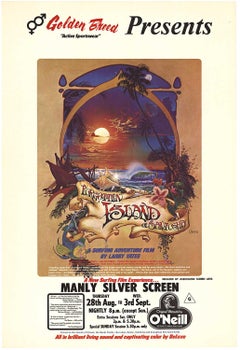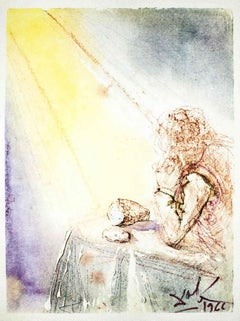
Panem Nostrum - From "Pater Noster" by Salvador Dalí - 1966
View Similar Items
Salvador DalíPanem Nostrum - From "Pater Noster" by Salvador Dalí - 19661966
1966
About the Item
- Creator:Salvador Dalí (1904 - 1989, Spanish)
- Creation Year:1966
- Dimensions:Height: 15.75 in (40 cm)Width: 13.19 in (33.5 cm)Depth: 0.04 in (1 mm)
- Medium:
- Movement & Style:
- Period:
- Framing:Framing Options Available
- Condition:Insurance may be requested by customers as additional service, contact us for more information.
- Gallery Location:Roma, IT
- Reference Number:Seller: M-1129841stDibs: LU65037296972
Salvador Dalí
Instantly recognizable by his waxed, upturned mustache, the flamboyant Salvador Dalí is one of modern art’s most distinctive figures. He is also one of the icons of the 20-century avant-garde Surrealist movement, whose dreamlike images, drawn from the depths of the unconscious, he deployed in paintings, sculptures, prints and fashion, as well as in film collaborations with Luis Buñuel and Alfred Hitchcock.
Dalí was born in Figueres, Catalonia, and even as a youngster, displayed the sensitivity, sharp perception and vivid imagination that would later define his artworks. In these, he conjured childhood memories and employed religious symbols and Freudian imagery like staircases, keys and dripping candles to create unexpected, often shocking pieces.
Dalí's use of hyperrealism in conveying Surrealist symbols and concepts that subvert accepted notions of reality is epitomized in what is perhaps his most recognizable painting, The Persistence of Memory (1931), in which he depicts the fluidity of time through melting clocks, their forms inspired by Camembert cheese melting in the sun. His artistic genius, eccentric personality and eternal quest for fame made him a global celebrity.
“Each morning when I awake, I experience again a supreme pleasure,” he once said. “That of being Salvador Dalí.”
Find original Salvador Dalí paintings, prints, sculptures and other works on 1stDibs.
- Collection of Vintage Cards After Salvador Dalì - 1980sBy Salvador DalíLocated in Roma, ITCollection of cards after Salvador Dalì, including 26 pieces. Good conditions. With titles and signed on the plate.Category
1980s Surrealist More Prints
MaterialsOffset
- Untitled - Original Lithograph by Paul Wunderlich - 1970By Paul WunderlichLocated in Roma, ITUntitled 3 is an original artwork realized in 1970 by Paul Wunderlich. Hand signed lithograph. Edition of 30 prints (in Roman Numerals). Image dimensions: 60x45 cm. Very Good Conditi...Category
1970s Surrealist More Prints
MaterialsLithograph
- Aquae Diluvii Super Terram - Lithograph - 1964By Salvador DalíLocated in Roma, ITAquae Diluvii Super Terram is a Color lithograph on heavy rag paper realized in 1964. It is part of Biblia Sacra vulgatæ edition is published by Rizzoli-Mediolani between 1967 and 19...Category
1960s Surrealist More Prints
MaterialsLithograph
- Vox Clamantis - Lithograph - 1964By Salvador DalíLocated in Roma, ITVox Clamantis is a Color lithograph on heavy rag paper realized in 1964. It is part of Biblia Sacra vulgatæ edition is published by Rizzoli-Mediolani between 1967 and 1969. Signed a...Category
1960s Surrealist More Prints
MaterialsLithograph
- Abraham, Pater Multarem Gentium - Lithograph - 1964By Salvador DalíLocated in Roma, ITAbraham, Pater Multarem Gentium is a Color lithograph on heavy rag paper realized in 1964. It is part of Biblia Sacra vulgatæ edition is published by Rizzoli-Mediolani between 1967 a...Category
1960s Surrealist More Prints
MaterialsLithograph
- Filius Prodigus - Lithograph - 1964By Salvador DalíLocated in Roma, ITFilius Prodigus is a Color lithograph on heavy rag paper realized in 1964. It is part of Biblia Sacra vulgatæ edition is published by Rizzoli-Mediolani between 1967 and 1969. Signed...Category
1960s Surrealist More Prints
MaterialsLithograph
- Forgotten Island of Santosha original vintage surfing movie posterLocated in Spokane, WAOriginal: FORGOTTEN ISLAND OF SANTOSHA vintage surfing poster. Artist: Bill Ogden. Size: 27" x 39 3/4". Year: 1974. Original One Sheet from Austra...Category
1970s Surrealist Landscape Prints
MaterialsOffset
- Marc Chagall - Original LithographBy Marc ChagallLocated in Collonge Bellerive, Geneve, CHMarc Chagall Original Lithograph 1963 Dimensions: 32 x 24 cm Reference: Chagall Lithographe 1957-1962. VOLUME II. Unsigned edition of over 5,000 Condition : Excellent Marc Chagall (born in 1887) Marc Chagall was born in Belarus in 1887 and developed an early interest in art. After studying painting, in 1907 he left Russia for Paris, where he lived in an artist colony on the city’s outskirts. Fusing his own personal, dreamlike imagery with hints of the fauvism and cubism popular in France at the time, Chagall created his most lasting work—including I and the Village (1911)—some of which would be featured in the Salon des Indépendants exhibitions. After returning to Vitebsk for a visit in 1914, the outbreak of WWI trapped Chagall in Russia. He returned to France in 1923 but was forced to flee the country and Nazi persecution during WWII. Finding asylum in the U.S., Chagall became involved in set and costume design before returning to France in 1948. In his later years, he experimented with new art forms and was commissioned to produce numerous large-scale works. Chagall died in St.-Paul-de-Vence in 1985. The Village Marc Chagall was born in a small Hassidic community on the outskirts of Vitebsk, Belarus, on July 7, 1887. His father was a fishmonger, and his mother ran a small sundries shop in the village. As a child, Chagall attended the Jewish elementary school, where he studied Hebrew and the Bible, before later attending the Russian public school. He began to learn the fundamentals of drawing during this time, but perhaps more importantly, he absorbed the world around him, storing away the imagery and themes that would feature largely in most of his later work. At age 19 Chagall enrolled at a private, all-Jewish art school and began his formal education in painting, studying briefly with portrait artist Yehuda Pen. However, he left the school after several months, moving to St. Petersburg in 1907 to study at the Imperial Society for the Protection of Fine Arts. The following year, he enrolled at the Svanseva School, studying with set designer Léon Bakst, whose work had been featured in Sergei Diaghilev's Ballets Russes. This early experience would prove important to Chagall’s later career as well. Despite this formal instruction, and the widespread popularity of realism in Russia at the time, Chagall was already establishing his own personal style, which featured a more dreamlike unreality and the people, places and imagery that were close to his heart. Some examples from this period are his Window Vitebsk (1908) and My Fianceé with Black Gloves (1909), which pictured Bella Rosenfeld, to whom he had recently become engaged. The Beehive Despite his romance with Bella, in 1911 an allowance from Russian parliament member and art patron Maxim Binaver enabled Chagall to move to Paris, France. After settling briefly in the Montparnasse neighborhood, Chagall moved further afield to an artist colony known as La Ruche (“The Beehive”), where he began to work side by side with abstract painters such as Amedeo Modigliani and Fernand Léger as well as the avant-garde poet Guillaume Apollinaire. At their urging, and under the influence of the wildly popular fauvism and cubism, Chagall lightened his palette and pushed his style ever further from reality. I and the Village (1911) and Homage to Apollinaire (1912) are among his early Parisian works, widely considered to be his most successful and representative period. Though his work stood stylistically apart from his cubist contemporaries, from 1912 to 1914 Chagall exhibited several paintings at the annual Salon des Indépendants exhibition, where works by the likes of Juan Gris, Marcel Duchamp and Robert Delaunay were causing a stir in the Paris art world. Chagall’s popularity began to spread beyond La Ruche, and in May 1914 he traveled to Berlin to help organize his first solo exhibition, at Der Sturm Gallery. Chagall remained in the city until the highly acclaimed show opened that June. He then returned to Vitebsk, unaware of the fateful events to come. War, Peace and Revolution In August 1914 the outbreak of World War I precluded Chagall’s plans to return to Paris. The conflict did little to stem the flow of his creative output, however, instead merely giving him direct access to the childhood scenes so essential to his work, as seen in paintings such as Jew in Green (1914) and Over Vitebsk (1914). His paintings from this period also occasionally featured images of the war’s impact on the region, as with Wounded Soldier (1914) and Marching (1915). But despite the hardships of life during wartime, this would also prove to be a joyful period for Chagall. In July 1915 he married Bella, and she gave birth to a daughter, Ida, the following year. Their appearance in works such as Birthday (1915), Bella and Ida by the Window (1917) and several of his “Lovers” paintings give a glimpse of the island of domestic bliss that was Chagall’s amidst the chaos. To avoid military service and stay with his new family, Chagall took a position as a clerk in the Ministry of War Economy in St. Petersburg. While there he began work on his autobiography and also immersed himself in the local art scene, befriending novelist Boris Pasternak, among others. He also exhibited his work in the city and soon gained considerable recognition. That notoriety would prove important in the aftermath of the 1917 Russian Revolution when he was appointed as the Commissar of Fine Arts in Vitebsk. In his new post, Chagall undertook various projects in the region, including the 1919 founding of the Academy of the Arts. Despite these endeavors, differences among his colleagues eventually disillusioned Chagall. In 1920 he relinquished his position and moved his family to Moscow, the post-revolution capital of Russia. In Moscow, Chagall was soon commissioned to create sets and costumes for various productions at the Moscow State Yiddish...Category
1960s Surrealist Figurative Prints
MaterialsLithograph
- Safety Comes in Cans original vintage poster Health - British Safety CouncilLocated in London, GBTo see our other original vintage public information posters, scroll down to "More from this Seller" and below it click on "See all from this Seller" - or send us a message if you ca...Category
Late 20th Century Surrealist More Prints
MaterialsLithograph
- TUGBOAT AFLOAT Signed Lithograph, Ship in a Bottle, Seascape, Blue WaterBy Fanny BrennanLocated in Union City, NJTUGBOAT AFLOAT is a hand drawn, limited edition lithograph by the American surrealist artist Fanny Brennan, using traditional hand lithography techniques printed on archival Arches p...Category
1990s Surrealist Landscape Prints
MaterialsLithograph
- Pleni Luna Lune Haute 1974By Wifredo LamLocated in Miami, FLWifredo Lam "Pleni Luna Lune Haute" 1974 Lithograph Ap 4 of 10 25 x 19 inCategory
1970s Surrealist More Prints
MaterialsLithograph
- La Grande Parade des Chats by Leonor Fini 1973 Cats LythographsBy Leonor FiniLocated in FRLa grande Parade des Chats Original Illustrations by Leonor Fini Containing sixty illustrations This is from a unique special run being one of only 35 copies produced for personal use by Leonor Fini these were numbered EA 1 to EA 35 This example being EA 9 and has been personally dedicated and signed by the artist to her friend Philippe Aetmann A mid century modern artist Leonor Fini 1907-1996 There was a small run of this Limited Edition in total 250 copies numbered and signed by the artist with 230 copies printed on hand made Arches paper and another 20 on Japon nacre Through time most of these books have been been split up and the illustrations sold off individually Consequently there are very few complete examples remaining Original printed hardcover containing the book itself printed with winged cats (reference to her Sphinx women) Unique copy in very good condition with only minor signs of age Leonor Fini (1907–1996) is considered one of the most important women artists of the twentieth century and also one of the most misunderstood. Frequently labeled a surrealist she was never a member of that group or movement, preferring to stake her own claim on modernism with a vision that owes more to the farthest shores of her imagination than to any affiliation with art trends, schools or movements. The originality of her art as well as her intelligence, famous wit and charisma accorded her celebrity status in the Paris art world and beyond beginning in the late thirties. Often eclipsing and even compromising her standing as a major artist was the originality and impact of her personal style. Her panache and glamour, once they found a place in the collective imagination of the time, turned her into a much-publicized fashion and feminist icon. Always controversial, with as many detractors as admirers, she lived and painted consummately on her own terms. Born in Buenos Aires of mixed Spanish, Italian, Argentine and Slavic blood, Leonor was raised in Trieste by her single mother where she absorbed the multi-ethnic and mixed cultural heritage of that cosmopolitan center. The predominant themes in Leonor Fini’s art are sexual tensions, mysteries and games. One of her favored subjects is the interplay between the dominant female and the passive male, and in many of her most powerful works the female takes the form of the sphinx to which she felt a strong identification. Her genius for stage and screen design is evident in her numerous ground breaking theater decors...Category
1970s Surrealist More Prints
MaterialsLithograph
